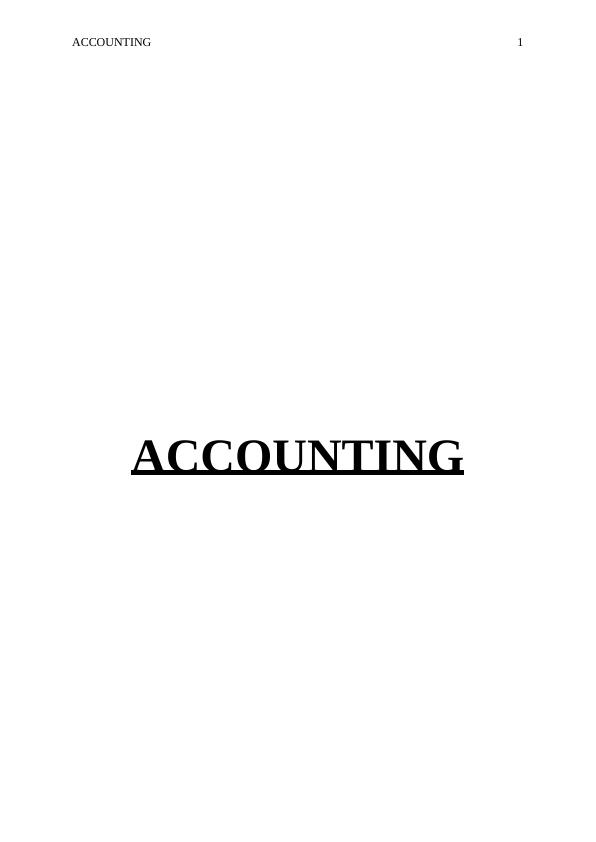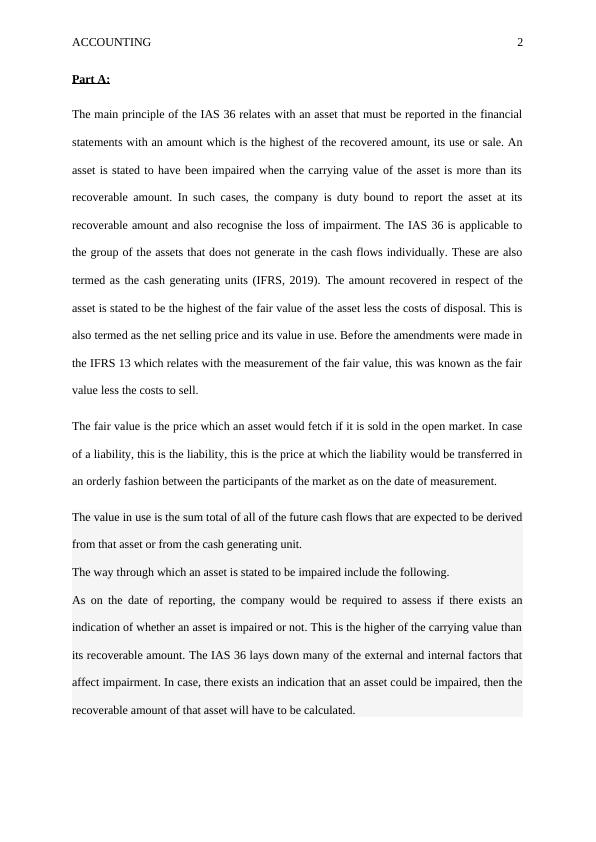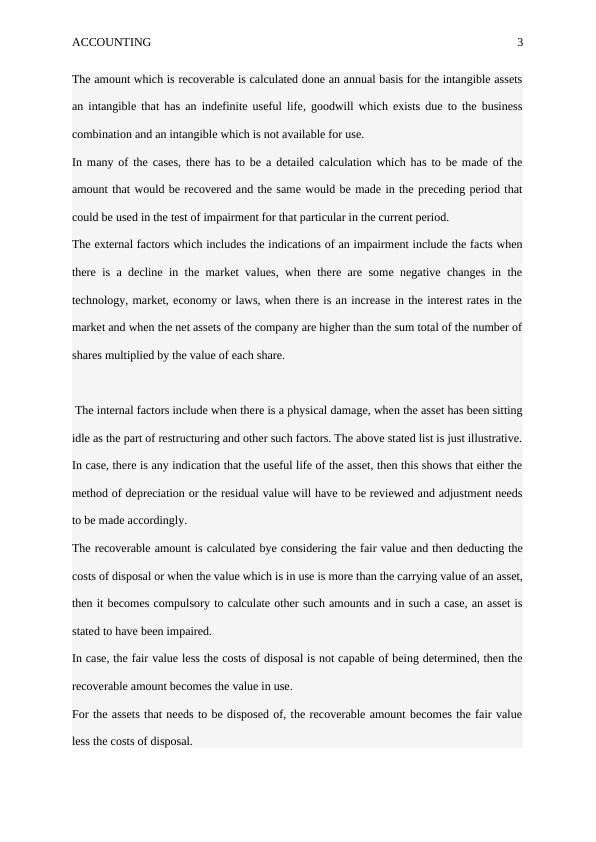IAS 36 Impairment of Assets: Principles, Factors and Calculation
7 Pages1239 Words96 Views
Added on 2023-04-25
About This Document
This article explains the main principle of IAS 36, which relates to an asset that must be reported in the financial statements with an amount that is the highest of the recovered amount, its use or sale. It discusses the external and internal factors that affect impairment and the way through which an asset is stated to be impaired. The article also provides desired calculations and journal entries for accounting.
IAS 36 Impairment of Assets: Principles, Factors and Calculation
Added on 2023-04-25
ShareRelated Documents
End of preview
Want to access all the pages? Upload your documents or become a member.
Impairment of Assets: Calculation of Recoverable Amount, Value in Use, Fair Value less Cost of Disposal
|6
|1435
|409
(pdf) Corporate Accounting Assignment Sample
|6
|1554
|20
Essay on Impairment Test for Asset
|10
|1621
|44
Corporate Accounting Assignment | Reporting Assignment
|9
|2003
|36
Corporate Accounting, Reporting Assignment
|6
|1465
|125
Impairment of Assets IAS 36 : Assignment
|8
|1564
|40



